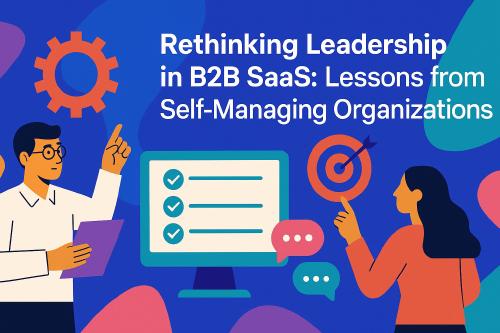Creating High-Purpose Environments (High-Purpose Environments, Part 1)
High-purpose environments are cultural spaces that inspire, motivate, and empower individuals to work toward a common goal. A strong sense of purpose, clear values, and a commitment to continuous growth and improvement characterize these environments.
I first came across the term high-purpose environments in the book “The Culture Code” by Daniel Coyle. The author defines high-purpose environments as the following:
High-purpose environments are filled with small, vivid signals designed to create a link between the present moment and a future ideal.
In this article series of six articles, I will bring this idea to software engineering and product development. In this realm, vision, values, guiding principles, and a mission are essential pillars of high-purpose environments. The vision is the future ideal where the values and guiding principles, alongside a clear mission, link the present moment and that ideal. We will explore another link in the last article of this series: engineering strategies.
In this first article, I will explore the importance of high-purpose environments and provide actionable tips for creating them in your organization.
The important thing about creating high-purpose environments is that having those signals and pillars is not enough. They need to be present and influence day-to-day work. They are a reminder of what the organization wants to achieve and how it intends to achieve it.
High-Purpose Environments are High-Creativity Environments
Software engineering is a highly creative activity. The whole point of the Agile movement is to adapt to changing circumstances and handle complexity and uncertainty well. Therefore, high-purpose environments in software engineering and complex systems are high-creativity environments.
Thus, it is crucial that whatever guidance you give your team is not limiting their freedom and creativity but channeling it. That is why my article about engineering strategy comes last: For small companies with their vision and guiding principles straight, strategies might be too much and too early. Even in bigger companies, strategies risk limiting creativity and the solution space too much.
High-creativity environments are spaces and cultures that inspire, encourage, and nurture imaginative thinking and collaboration. Teams that can adapt to changing circumstances and overcome challenges without being told what to do are likely to be found in high-creativity environments.
Therefore the question I would like to answer in this article is how to create high-creativity environments in software companies.
Building High-Creativity Environments
As Daniel Coyle pointed out in his book, high-creativity environments are not about artistic creativity. They are about creating environments of psychological safety, high ownership, trust, support, and aligned group energy.
[…] because building creative purpose isn’t really about creativity. It’s about building ownership, providing support, and aligning group energy toward the arduous, error-filled, ultimately fulfilling journey of making something new.
Vision and mission set the direction
Vision, mission, values, and guiding principles are some ingredients that help build high-creativity environments. They set the direction and give broad guidance about how to move in that direction. Sometimes it might not be possible to optimize for all values simultaneously. Thus, knowing their order and priority is crucial.
The group itself is the top priority
Successful groups have the group itself as the top priority. They respect and value each other, focus on building relationships, and support each other. Through this, they create an environment of psychological safety and support. They know that errors and mistakes can happen and see those as opportunities for the group to learn, grow and improve. Consequently, high collaboration is another crucial aspect of such high-performing groups.
Customers are priority number two
Therefore, ironically the biggest mistake that teams can make is trying to push through issues in the group and focus on delivery and creating customer value when this priority is not met yet. Usually, highly successful groups often have customers as the second priority. This should be reflected in their values and guiding principles.
Experimentation and innovation come from psychological safety and freedom
Having these priorities right makes experimentation and innovation far more likely to happen. Celebrate achievements as a team but also celebrate learning opportunities. Combine this with high autonomy, flexibility, and support when needed, and you get a virtuous cycle of increasing creativity, performance, and relationship.
Diversity
Last but definitely not least, put effort into increasing diversity and inclusion. By itself and through the nature of being a place of psychological safety and mutual respect, such environments are more likely to attract various talents over time when people become comfortable bringing their whole selves and uniqueness to work.
However, especially in groups with low diversity (unfortunately common in software: all male), putting effort into increasing diversity, using inclusive language, and making people from every background, gender, nationality, and religion feel welcome will make it easier to attract and retain diverse talent.
Small Signals over Big PowerPoints
When leaders think about transforming environments to become more purpose-filled and creative, the first impulse often is to create a beautiful slide deck to communicate the values, principles, and grand vision and mission.
Unfortunately, this rarely works because frontal input does not create an environment where those values become feelable. People do not interact with them, reflect on them or discuss them. Thus, they are forgotten when people leave the meeting. Furthermore, depending on how often you tried this, people will likely see the words on those slides as empty marketing bla-bla.
What works better is to have small and frequent signals permeate the workplace. In other words, the values and principles need to be lived. Vision and mission should be present every day. Create opportunities for people to interact with and challenge the values, priorities, and mission. This will spark lively discussions that create a deeper understanding and identification of the company’s purpose.
More importantly, it shows that it is not about blindly following but letting the best idea win and valuing every opinion and contribution.
High-Purpose Environments are Never Done
Creating high-purpose environments is not a task on a todo-list that can be checked off. It requires constant effort. You might think, “Oh no, let’s not discuss our values again. We have done that already.” — It is important to realize, that you might understand the values differently than others on the team. For you, it might be evident that they are still relevant. For others — not so much.
It is good to frequently reflect on values and priorities, check if they are still valid and relevant, and rethink how they are lived and can be made more present. This enforces better understanding and identification throughout the team and ensures they are not empty words in a Notion document.
Outlook
This was part one of the high-purpose environments series.
The following articles will be published every Saturday over the next weeks. Subscribe to my RSS feed or follow me on LinkedIn to ensure you get all the articles.
- Part two will cover the foundation of high-purpose environments in software engineering, discussing “The Importance of an Engineering Vision”.
- Part three will be “Crafting a Compelling Engineering Vision” .
- In part four, we will cover the “Importance of Values and Guiding Principles for Distributed Decision Making” .
- The topic “Engineering Excellence through Mission-Driven Teams” will be covered in part five.
- The sixth and final part will be about “Engineering Strategy: Actionable and Specific Guidance for Growing Engineering Teams”.
Conclusion
High-purpose environments are essential for fostering creativity and innovation and crucial for building strong, supportive, and diverse teams. By creating a culture of psychological safety, trust, and alignment around a shared vision and mission, organizations can empower their teams to overcome challenges and adapt to changing circumstances. Ensuring that values and guiding principles are lived and revisited frequently is vital to maintaining a high-purpose environment.
Creating such an environment is an ongoing process that requires constant attention and commitment. By focusing on small signals rather than great presentations, leaders can embed these values into the fabric of their organization, fostering a genuinely high-purpose and high-creativity environment that supports the growth and success of the entire team.
Do you work in a high-purpose environment? What are your essential ingredients? What do you think is missing in your context?





Use the share button below if you liked it.
It makes me smile, when I see it.